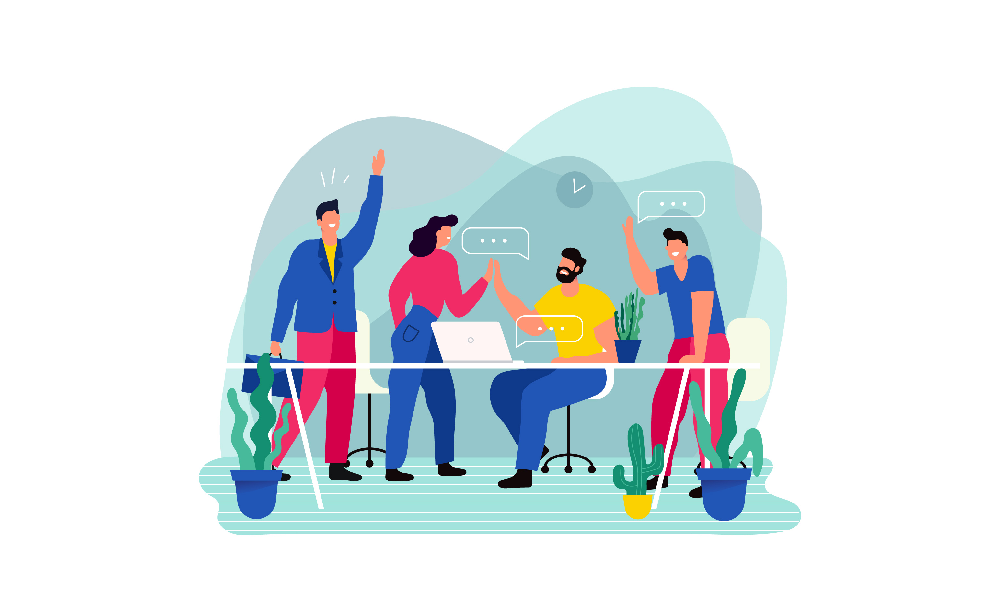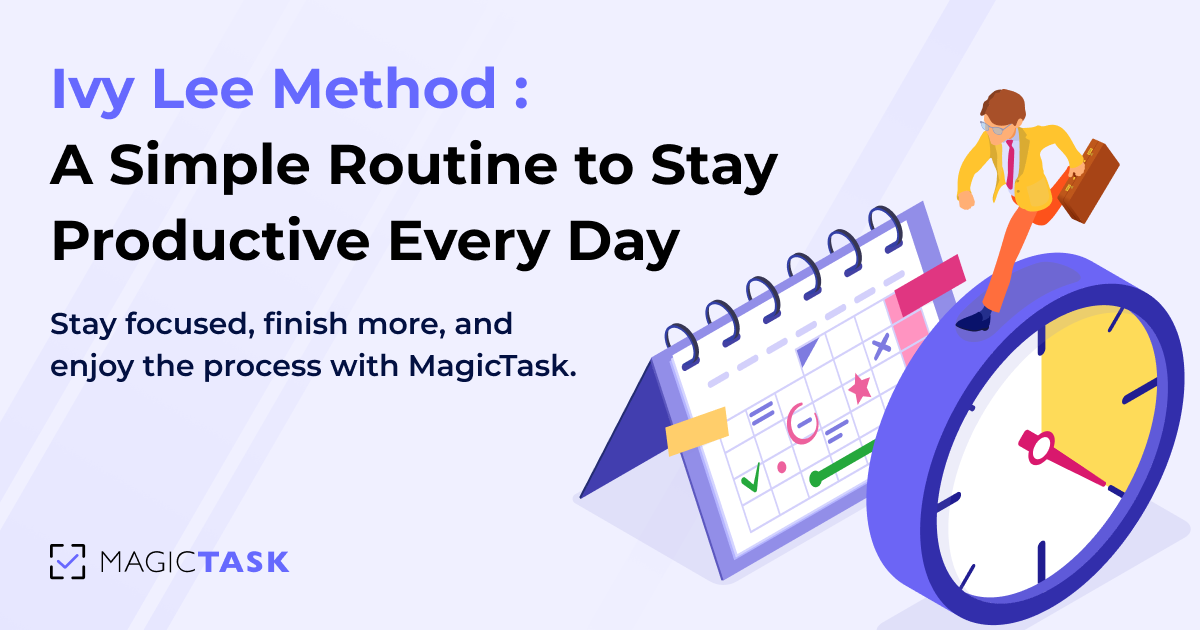Productivity Management 101: What is It and What It Can Do for You?

Unlock the secrets to optimal efficiency and take control of your productivity with Productivity Management. In this article, we reveal essential strategies and techniques to supercharge your productivity and achieve your goals.
Are you tired of feeling overwhelmed and struggling to stay focused? It's time to break free from the productivity pitfalls and discover a route to optimal efficiency. Join us as we explore practical tips, proven methods, and cutting-edge tools that will transform your work and personal life.
From effective time management to prioritization techniques, we'll guide you on a journey to reclaim your productivity. Get ready to master the art of productivity management and unlock your full potential.
What is Productivity Management?
Productivity Management, at its core, represents a systematic approach to enhancing the efficiency of work activities. Essentially, it's a measure of how effectively resources are deployed to generate goods or services.
Factors influencing productivity range widely, from the quality of resources utilized, and the efficiency of operational processes, to the skill level of employees. The role of productivity management is to optimize these elements to bolster output.
Amongst several metrics to gauge productivity, the most widespread is 'output per hour'. As per recent research, an average employee is productive for only about 3 hours each day.
Productivity growth serves as a crucial economic barometer, gauging how resourcefully an economy capitalizes on its assets. An economy boasting a high rate of productivity growth can either generate more output with equivalent inputs or maintain the same output level with fewer resources. This fuels higher living standards and propels economic growth.
This identical principle can be extrapolated to a business environment or a smaller team framework.
Therefore, productivity management essentially involves overseeing, assessing, and boosting employee efficiency. Businesses leveraging this approach can ensure optimal workforce utilization and maximize their output potential.
Key Benefits of Productivity Management

Now that we handled the topic of what is productivity management let's talk about why, exactly, you should implement it. There are many benefits to productivity management, including:
1. Improved Efficiency
By monitoring employee productivity, businesses can identify areas where workers are struggling and implement changes to help them work more efficiently. This can lead to increased output and improved bottom-line results.
2. Greater Engagement
Employees who feel like their productivity is being monitored and managed are more likely to be engaged in their work. This leads to a more positive work environment and greater job satisfaction.
3. Increased Flexibility
Productivity management can help businesses to be more flexible in their operations. By knowing where employees are struggling, businesses can make changes to processes and procedures to accommodate workers and improve efficiency.
4. Better Decision Making
Businesses can make better decisions about where to allocate resources by monitoring employee productivity. You can see this resulting in improved efficiency and cost savings.
5. Improved Morale
When employees feel like their productivity is being managed effectively, they are more likely to be motivated and have a positive attitude toward their work. This can lead to improved morale and job satisfaction.
6. Greater Customer Satisfaction
When businesses operate efficiently, it leads to happier customers. When customers are happy, they are more likely to come back and do business with the company again.
7. Increased Profits
One of the ultimate goals of productivity management is to increase profits. Businesses can directly impact their bottom line by monitoring and improving employee productivity.
It is a critical part of any business and can positively impact many different areas. By understanding the key benefits of this type of management, businesses can make sure that they are getting the most out of their workforce and achieving their goals.
Also Read: 10 Common Productivity Mistakes & How to Avoid Them At All Costs
7 Practical Ways to Improve Your Team's Productivity
Now let's talk about the practical stuff - what you can do or start right now and boost your team's productivity.
1. Maintain Open Communication

There are a few ways to encourage open communication within your team. First, make sure that team members feel comfortable communicating with each other. This could involve setting up regular meetings or check-ins, using collaborative tools like Slack or Google Docs, or simply creating an open and inclusive culture where everyone feels heard.
Another way to encourage communication is to remove any barriers to information sharing. This could mean giving everyone access to the same resources and information or making it easy for people to ask questions and get help when they need it.
Finally, you can encourage communication by creating opportunities for team members to interact with each other. This could involve planning team-building activities or social events or simply making sure that there are plenty of opportunities for people to work together.
2. Encourage Collaboration
There are many ways to encourage collaboration among employees. One way is to create opportunities for employees to work together on projects. You can do this by assigning tasks that require cooperation and communication or by setting up team-building exercises.
Additionally, you can create a culture of collaboration by rewarding employees for working together and displaying teamwork. Finally, you can lead by example and encourage collaboration yourself.
By working together on projects, employees have the opportunity to get to know each other better and build trust. When employees feel like they can rely on and trust their colleagues, they are more likely to be willing to collaborate.
Team-building exercises can help employees learn how to communicate and work together more effectively. These exercises can be as simple as ice-breakers or team-building games. By doing these activities together, employees will start to see each other as teammates instead of just co-workers.
Rewarding employees for collaborating can also encourage more cooperation among staff. Recognizing employees who work well together and displaying teamwork can inspire others to do the same. You can give out awards, bonuses, or other forms of recognition to those who exemplify collaboration in the workplace.
3. Support Creativity

There are a number of ways to encourage creativity among employees. One is to provide them with opportunities to be creative, such as by giving them assignments that require them to be innovative or by allowing them time to work on personal projects.
Another is to create an environment that is conducive to creativity, such as by encouraging open-mindedness and risk-taking.
Finally, you can reward employees for their creativity by giving them bonuses or recognition. By taking these steps, you can create an environment in which employees feel comfortable being creative and are more likely to come up with innovative ideas.
4. Encourage Critical thinking
There are a few key ways to encourage critical thinking among employees. First, as a manager, you need to model critical thinking yourself. If you're not demonstrating critical thinking in your decision-making, your team won't see its value either.
Second, create an environment where questioning is encouraged. This means creating opportunities for employees to share their ideas and concerns and listen to what they say.
Encourage employees to think outside the box, and reward them when they do. Finally, provide employees with the resources they need to think critically. This includes access to information, time to reflect, and opportunities to learn. You'll create a more innovative and effective team by encouraging critical thinking in your workplace.
5. Build Healthy Competition
It's no secret that competition can be a powerful motivator. When employees feel like they're in competition with their colleagues, they're more likely to push themselves to perform at their best.
Of course, not all competition is healthy. If the competition is too intense, it can lead to resentment and conflict among employees. That's why it's essential to encourage healthy competition in the workplace.
Here are a few tips for doing so:
- Make sure the playing field is level. If some employees feel like they're at a disadvantage, the competition won't be fair or fun. To level the playing field, make sure everyone has the same opportunity to succeed.
- Set clear rules and objectives. Without clear rules, the competition can get out of hand. Make sure everyone knows what they're competing for and how the winner will be determined.
- Encourage friendly rivalry. Competition doesn't have to be cutthroat. Encourage employees to be supportive of one another while still striving to come out on top.
- Offer prizes that everyone wants. The prize should be something that all employees would be happy to win. Avoid offering prizes that are too personal or that not everyone would want.
- Celebrate the winner...and the losers. Recognize and reward the employees who do well in the competition. But don't forget about the employees who didn't win. Make sure they feel like they're still valued members of the team.
6. Establish Consequences for Poor Performance
There is the carrot, and then there’s the stick. Now, you should always use the carrot as much as possible, but people need to know that slacking off has true consequences.
If team members know that there will be consequences for not meeting deadlines or completing their assigned tasks, they will be more likely to take their work seriously and stay on track. Possible consequences could include being reassigned to a less desirable project, loss of privileges (e.g., working from home), or even termination.
One way to establish consequences for poor performance is to create a grading system that is linked to raises, bonuses, and other forms of compensation. This will give team members an incentive to do their best and maintain a high level of productivity.
Another way to establish consequences for poor performance is to have a meeting with all team members where you discuss the issue and agree on what the consequences will be. This will help to ensure that everyone is on the same page and that there is a clear understanding of the expectations.
7. Develop Open Feedback Culture

Encouraging team members' feedback can help identify areas where productivity can be improved. Feedback can be solicited through regular one-on-one meetings, surveys, or simply by asking team members for their input on a regular basis.
Once you have received feedback, be sure to take it into account and make changes accordingly. This will show team members that their feedback is valued and that you are willing to make changes to improve productivity.
Feedback should be encouraged from all team members, not just those in management positions. Junior team members may have fresh perspectives that can be valuable in identifying areas for improvement. Furthermore, soliciting feedback from various team members will help ensure that all voices are heard and that everyone feels like they have a say in how the team operates.
Also Read: How MagicTask Improved Productivity at Imaginovation
Conclusion
Implementing these practical ways to improve your team's productivity will help to create a more cohesive and effective team.
You can create more motivation and oversight by using a task management platform like MagicTask.
With a good task management system, you can clearly see the tasks assigned to you and your team, how many tasks within a project have been finished, and much more.




